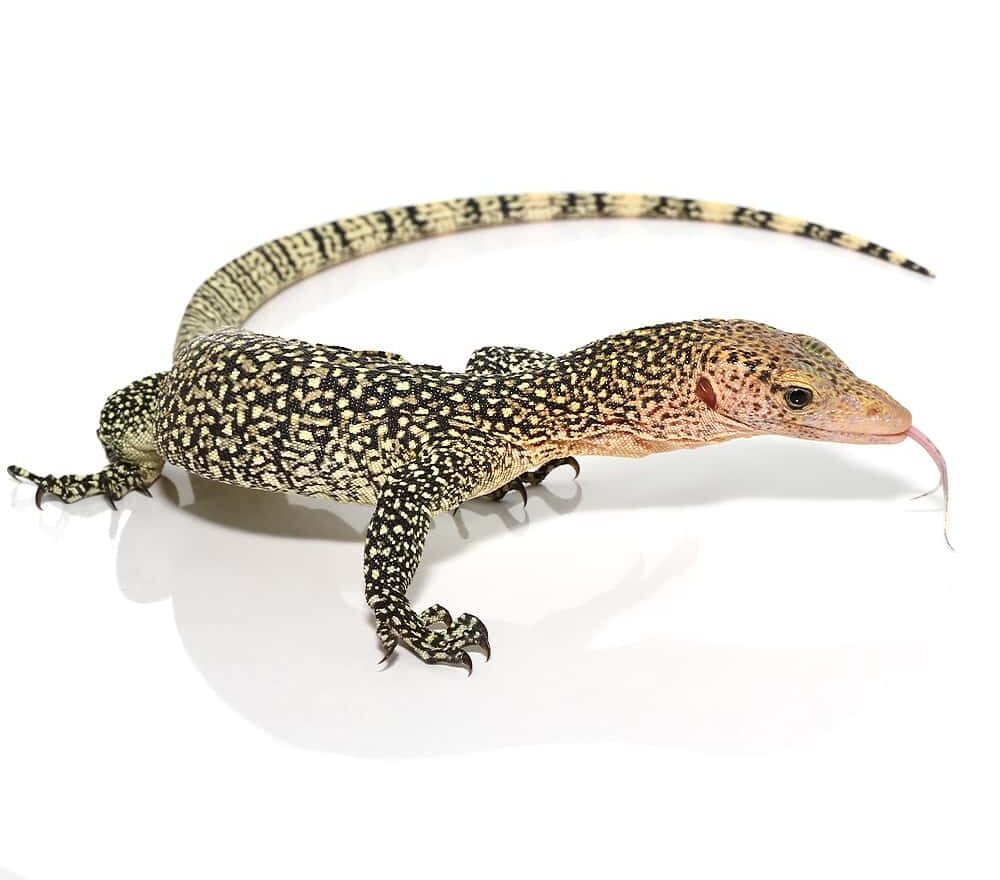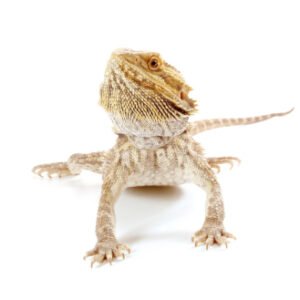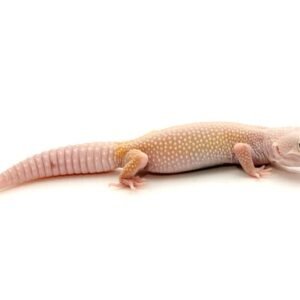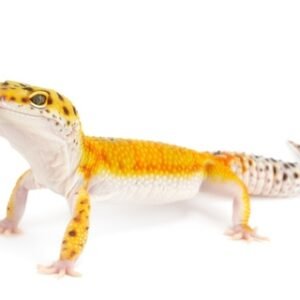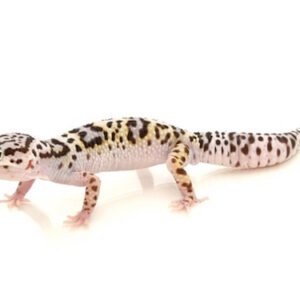Understanding the Mangrove Monitor: An In-Depth Look at This Unique Species
Introduction to Mangrove Monitors
The mangrove monitor, scientifically known as Varanus cumingi, is a remarkable lizard species that inhabits tropical mangrove forests, primarily in regions from Southeast Asia to parts of the Pacific. This unique reptile is a member of the Varanidae family, which includes the Komodo dragon and other monitor lizards. Mangrove monitors typically range in length from 90 to 130 centimeters, making them one of the larger species within their genus. Their elongated bodies are complemented by long tails, which serve as a crucial balance mechanism while navigating their arboreal habitat.
The coloration of the mangrove monitor is particularly striking, often displaying a combination of metallic greens, browns, and blacks, which allow for effective camouflage among the foliage and bark of mangrove trees. This adaptive coloration not only aids in avoiding predators but also positions them as proficient ambush hunters. Their physical features, including elongated limbs and sharp claws, are finely-tuned for climbing and foraging amongst the twisted roots and branches of mangrove ecosystems.
Geographically, the mangrove monitor’s distribution spans several countries along the coasts, particularly in Australia, the Philippines, and parts of Indonesia. These lizards play a pivotal role in their ecosystems, serving as both predators and prey, contributing to the complex food web present in mangrove settings. Their diet consists mainly of invertebrates and small vertebrates, including crabs and fish, highlighting their adaptability to both terrestrial and aquatic environments.
With their unique characteristics and ecological significance, the mangrove monitor serves as an important indicator species for the health of mangrove ecosystems. Understanding their biology and behavior can foster greater awareness and commitment to conserving these crucial habitats, which are under threat from environmental changes and human activities.
Habitat and Behavior
The mangrove monitor (Varanus indicus) is a unique species that primarily inhabits coastal mangrove ecosystems, where it plays a significant role in the ecological dynamics of these environments. These lizards are typically found in regions characterized by intertidal zones that are influenced by tidal fluctuations, providing them access to various terrestrial and aquatic resources. Mangrove monitors are adept at climbing and often make their homes in the branches of mangrove trees, using these elevated perches for basking in the sun and avoiding terrestrial predators. The soft, muddy substrates of mangrove forests also offer suitable conditions for digging burrows where these reptiles can hide and lay eggs, further enhancing their survival rates.
In terms of behavior, the mangrove monitor exhibits a range of fascinating adaptations. This species is primarily diurnal, becoming active during the day when it forages for a diet rich in crustaceans, insects, and small vertebrates. Their keen eyesight and agility enable them to hunt effectively both on land and in water, demonstrating a remarkable versatility. Socially, mangrove monitors are generally solitary except during the breeding season, when they engage in elaborate courtship displays. Males often display their strength through ritualized combat, which involves physical posturing and, at times, wrestling, to win over potential mates. This behavior not only reinforces dominance hierarchies but also plays a crucial role in ensuring genetic diversity within their populations.
Additionally, these lizards possess excellent camouflage, making them adept at hiding among the mangrove roots and foliage from both predators and prey. Their ability to navigate through mangrove habitats is enhanced by their strong limbs and long tails, which aid in balance while climbing or swimming. Understanding the habitat and behavior of the mangrove monitor provides valuable insights into how this species has adapted to thrive in its unique coastal ecosystem.
Diet and Feeding Habits
The mangrove monitor (Varanus cumingi) is a carnivorous reptile that thrives in coastal and mangrove ecosystems. Its diet primarily consists of a variety of prey items, which include crustaceans, insects, and smaller reptiles. These dietary preferences enable the mangrove monitor to adapt to the dynamic environments it inhabits while playing a vital role in the ecological balance of its habitat.
One of the primary components of the mangrove monitor’s diet includes crustaceans such as crabs and shrimp. These creatures often reside in the intricate root systems of mangrove trees, providing an accessible food source for the monitor. In addition, insects like grasshoppers and beetles are a substantial part of their diet, which can be found on land and in the trees surrounding their habitat. Smaller reptiles, including lizards and even the eggs of other species, are also preyed upon, showcasing the monitor’s opportunistic feeding behavior.
The hunting techniques employed by mangrove monitors are both versatile and effective. They utilize their keen eyesight and excellent climbing abilities to locate and capture prey. The monitors often wait patiently, camouflaged among the foliage, to ambush unsuspecting victims. Their long and agile bodies enable them to navigate both terrestrial and arboreal environments, thus providing them access to a broader range of food sources.
Additionally, mangrove monitors exhibit remarkable adaptability in their feeding habits. During times when preferred prey is scarce, they are known to alter their diet, which helps maintain their survival. This flexibility not only aids in their personal sustenance but also contributes to controlling prey populations within the mangrove ecosystem. By preying on various species, mangrove monitors assist in regulating these populations, ensuring a balanced ecosystem that supports diverse wildlife.
Conservation Status and Threats
The mangrove monitor, a unique species found predominantly in coastal mangrove ecosystems, is facing numerous challenges that threaten its survival. Currently, this reptile’s conservation status is classified as Least Concern by the International Union for Conservation of Nature (IUCN). However, despite this classification, several factors impact its population numbers and natural habitat. Understanding these threats is essential to fostering effective conservation strategies.
One of the primary concerns regarding the mangrove monitor is habitat loss, primarily due to human activities. The ongoing expansion of urban areas, agricultural practices, and aquaculture development in coastal regions has led to significant destruction of mangrove forests. These ecosystems are vital not only for the mangrove monitor but also for various marine and terrestrial species. The degradation of these habitats disrupts the monitor’s natural behaviors and reproductive cycles, ultimately leading to a decline in population.
Climate change poses another significant threat to the mangrove monitor. Rising sea levels can result in the inundation of crucial habitats, while increased temperatures and changing precipitation patterns can affect food availability. Such climatic changes may also alter the delicate balance within the mangrove ecosystem, further jeopardizing the conditions necessary for the survival of the mangrove monitor. As a species that relies on specific environmental conditions, any shift in its habitat will have dire consequences.
Additionally, overexploitation through hunting and the pet trade is a concern for mangrove monitors. Although typically not targeted specifically, individuals can fall victim to illegal capture and trade, further impacting local populations. This exploitation underscores the necessity of establishing regulations and promoting awareness regarding the responsible management of wildlife.
To ensure the long-term survival of the mangrove monitor, it is essential to prioritize conservation efforts and protect its habitat. Engaging in initiatives that foster the restoration of mangrove ecosystems will provide necessary support to this species and enhance the overall health of our coastal environments.

